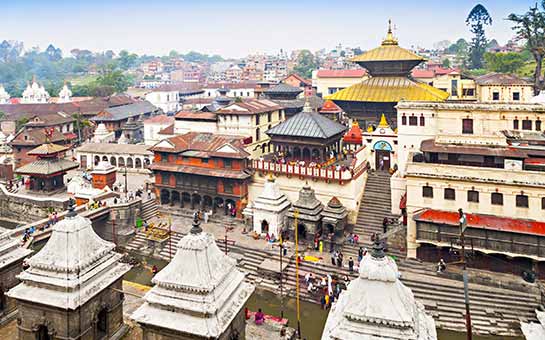Nepal (officially, the Federal Democratic Republic of Nepal) is a small, landlocked country in South Asia, nestled between China to the north and India to the south. For much of its recent history, its government enforced a strict policy of isolation. It wasn't until a palace revolt and the reinstitution of the monarchy in 1950 that the country opened its borders to the rest of the world. As a result of this isolation, Nepal remains one of the least-developed nations in the world. Its capital, Kathmandu, is the only major urban center in the country. Its population as of 2018 was just under 30 million people.
If you're planning a vacation to Nepal, make sure to purchase Nepal travel medical insurance to protect yourself from any complications that may arise during your trip.
Travel Medical Insurance for Travelers in Nepal – FAQs
Travel health insurance provides medical insurance coverage while you're traveling outside your home country. Use this website to compare plans. Alternatively, our licensed, experienced representatives will be happy to help you pick the plan that best fits your individual needs.
Do I need travel medical insurance for Nepal?
As of 2022, tourists visiting Nepal are still required to provide proof of travel medical insurance coverage for the duration of their trip. The recommended travel insurance for Nepal should cover you for your entire trip duration, and provide coverage for any activities you plan to take part in while on your trip.
Why buy travel medical insurance before traveling to Nepal?
The risk of injury or illness only increases when you are in an unfamiliar place, taking part in new activities and eating different cuisine. If you do happen to catch an illness or become injured, you will need travel medical insurance in order to receive the necessary care without being stuck paying a massive medical bill all on your own.
Nepal’s Most Popular Activities for Tourists
Trekking and Mountaineering
The portion of the Great Himalaya Range that runs through Nepal contains eight of the world's highest peaks: Mount Everest, Kanchenjunga I, Lhotse I, Makalu I, Cho Oyu, Dhaulagiri I, Manaslu I, and Annapurna I, all of them above 26,400 feet. Everest stands at an elevation of 29,028 feet and has gained popularity since Edmund Hillary and Sherpa Tensing Norgay's first successful ascent in 1953. In 2017, Nepal's government announced a ban on unguided ascents up the mountain. The Everest Base Camp is a popular tourist destination in its own right, offering common travelers and tourists a glimpse of the peak.
Annapurna Region
If you're looking for something a little less daunting, try the Annapurna region in north-central Nepal. It's the most popular and diverse trekking area in the country, and it offers routes lasting anywhere from three days to three weeks. The Annapurna Circuit lasts 21 days and is sometimes called the "Apple Pie Circuit", as many teahouses along the way serve fried apple pie. Popular sites and stops along the way include the Annapurna Sanctuary, Muktinath, the Kali Gandaki Valley, and Mustang.
Religious Pilgrimages
Nepal contains many important religious historical sites and attractions related to Hinduism and Buddhism. Hinduism is the major religion of Nepal. The Pashupatinath Temple, the world's largest temple of Shiva, is located in Kathmandu and attracts devout Hindus and curious tourists alike. The temple was built in the 5th century and is the largest temple complex in the country
Other destinations of note to Hindus are the Swargadwari temple complex, Janaki Mandir in Janakpurdham, Lake Gosainkunda, and the temples at Devghat.
The largest minority religion in Nepal is Buddhism. The founder of Buddhism, Siddhartha Gautama (also known as Gautama Buddha) was born in the Nepalese city of Lumbini in the 5th century BCE. Today, Lumbini is a UNESCO World Heritage Site. The vast majority of visitors are Buddhist pilgrims tracing the steps of Buddha throughout his life.
Nepalese Cuisine
Nepal's cuisine consists of a variety of flavors based on the ethnicity, soil, and climate of a given region. Many dishes contain variations on Asian, Tibetan, Indian, and Thai food. Two signature Nepalese dishes are dal bhat (rice and lentils) and momos (dumplings). A standard Nepali meal might consist of dal (lentil soup), bhat (boiled rice), and tarkari (curried vegetables). Rotis (flatbread) and dhedo (boiled flour) are popular choices in rural areas. Specialty dishes include sel roti (a sweet, ring-shaped rice bread / donut) and a vegetarian dish called patrode. Chow mein is also a popular modern choice for a quick, easy lunch.
Key Guidelines for Travelers in Nepal
Social Etiquette in Nepal
It's worth noting that, as Nepal is a conservative country, there are certain social customs and rules of etiquette that you should be aware of. When meeting someone new, instead of reaching out to shake his or her hand, clasp your hands together and say, "Namaste." Physical touch is customary only for closer relationships like friends and family. Make sure to finish the food served on your plate—an unfinished meal suggests that it wasn't satisfying. When visiting religious sites, dress conservatively and respectfully; cover your shoulders and knees. Also, whenever possible, try to avoid whistling indoors, as it's said to bring bad luck.
Watch What You Drink
Be advised that tap water and river water in Nepal is non-potable. To avoid getting sick, your best options are bottled water, boiled water, or purification tablets.
Before You Travel to Nepal – Do This
- Pay attention to your visa – Nepal rigorously enforces visa overstays. If you stay longer than your visa allows, you could be fined, or even imprisoned.
- Make sure your passport is valid for a minimum of six months after the date of your visa application, as well as for the entire length of your stay.
- Protect yourself from the risks of international travel with travel medical insurance.
